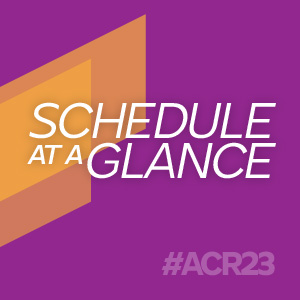Poster Session A
Immunobiology
Session: (0066–0095) T Cell Biology & Targets in Autoimmune & Inflammatory Disease Poster
0078: Circulating CD4+CXCR5+PD-1hi Follicular Helper T Cells Are Elevated in Patients with Rheumatoid Arthritis and Predict Treatment Response to Abatacept or TNF Blockers
Sunday, November 12, 2023
9:00 AM - 11:00 AM PT
Location: Poster Hall
- AB
Alejandro Balsa, MD
Hospital Universitario La Paz
Madrid, SpainDisclosure information not submitted.
Abstract Poster Presenter(s)
Maria-Eugenia Miranda-Carus1, Beatriz Nieto-Carvalhal1, Irene Monjo2, Mariela Uyaguari-Morocho1, Alejandro Villalba3, Laura Nuño1, Diana Peiteado1, Elisa Fernández1, Sara García-Carazo1 and Alejandro Balsa4, 1Hospital Universitario La Paz - IdiPAZ, Madrid, Spain, 2University Hospital La Paz, Madrid, Spain, 3Rheumatology Department, La Paz University Hospital, Madrid, Spain, 4Hospital Universitario La Paz, Madrid, Spain
Background/Purpose: CD4+CXCR5+PD-1hi follicular helper (Tfh) T cells dwell in the germinal centers (GCs), help B cells, and are implicated in Rheumatoid Arthritis (RA) pathogenesis. Circulating counterparts of Tfh (cTfh) cells are expanded in patients with autoimmune conditions and their frequencies seem to correlate with the pool of GC Tfh cells. Abatacept (ABT), interfering with costimulation, can restrain Tfh cell generation and the role of Tfh cells may be pre-eminent in patients with higher cTfh cell frequencies. Therefore, our objective was to examine a). The effect of treatment escalation with TNF blockers (TNFb) or ABT, on the cTfh cell frequency in RA, and b). The relation of baseline cTfh cells with the clinical response.
Methods: Peripheral blood was drawn from seropositive RA patients with an incomplete response to csDMARDS (n=41) who initiated, according to routine clinical practice, TNFb (n= 19) (10 Etn, 3 Adal, 3 Certo, 2 goli, 1 Ifx) or ABT (n= 22). cTfh cell frequencies were determined by flow cytometry of freshly isolated PBMCs at the basal visit and 12 months (12M) after treatment escalation. Age and gender-matched healthy controls (HC) were also studied at both time points (n=41).
Results: a). As compared with HC, RA patients receiving csDMARDs showed increased frequencies (fr.) of cTfh and activated ICOS+ cTfh cells (a-cTfh). A significant improvement of disease activity(∆DAS28 >2.0) was seen in all of the patients at 12M. The cTfh cell fr. did not vary in patients receiving TNFb but it dropped down to HC levels in those receiving ABT. The fr. of a-cTfh cells was significantly reduced in both groups; however, in the TNFb group it remained above HC whereas in the ABT group it dropped down to HC levels. b). In the ABT group, the baseline fr. of cTfh and a-cTfh had been higher for patients who went on to achieve remission at 12M (12Mr), as compared with those who remained active (12Ma) [Tfh logistic regression OR for remission 25.3,95% CI (12.2-39.8); ROC AUC 0.94(0.83-1), p< 0.0005]; as stated above, the 12M fr. were no longer elevated; in addition there were no differences between the 12Ma and 12Mr subjects. Conversely, in the TNFb group, the baseline fr. of cTfh and a-cTfh had been lower for 12Mr as compared with 12Ma patients [Tfh OR for not achieving remission 8.5 (4.3-15.5); ROC AUC 0.77(0.54-0.99), p< 0.05]; furthermore, the 12M fr. showed the same pattern: they had not significantly changed, persisted elevated above HC and remained lower in 12Mr as compared with 12Ma patients. The baseline cTfh cutoff fr. for achieving remission in the ABT group was >0.35% (sensitivity 92.7%, specificity 90%). The baseline cTfh cutoff fr. for not achieving remission in the TNFb group was >0.44% (sensitivity 67.7%, specificity 90%).
Conclusion: ABT but not TNFb, is able to curtail cTfh cell numbers in RA, suggesting that costimulation blockade can restrain germinal center overactivity. Higher baseline cTfh cell frequencies predict a good response to ABT and at the same time, a poor response to TNFb. Therefore, immunophenotyping of patients with an incomplete response to csDMARDs can facilitate a personalized therapeutic strategy for treatment escalation.
M. Miranda-Carus: Bristol-Myers Squibb(BMS), 5, Gebro Pharma, 5; B. Nieto-Carvalhal: None; I. Monjo: Amgen, 6, Gedeon Richter, 6, Janssen, 6, Novartis, 6, Roche, 6, UCB, 6; M. Uyaguari-Morocho: None; A. Villalba: None; L. Nuño: None; D. Peiteado: None; E. Fernández: None; S. García-Carazo: None; A. Balsa: AbbVie/Abbott, 1, 2, 5, 6, Bristol-Myers Squibb(BMS), 1, 5, Eli Lilly, 1, 5, 6, Merck/MSD, 1, 5, Novartis, 5, Pfizer, 1, 5, 6, UCB, 1, 5, 6.
Background/Purpose: CD4+CXCR5+PD-1hi follicular helper (Tfh) T cells dwell in the germinal centers (GCs), help B cells, and are implicated in Rheumatoid Arthritis (RA) pathogenesis. Circulating counterparts of Tfh (cTfh) cells are expanded in patients with autoimmune conditions and their frequencies seem to correlate with the pool of GC Tfh cells. Abatacept (ABT), interfering with costimulation, can restrain Tfh cell generation and the role of Tfh cells may be pre-eminent in patients with higher cTfh cell frequencies. Therefore, our objective was to examine a). The effect of treatment escalation with TNF blockers (TNFb) or ABT, on the cTfh cell frequency in RA, and b). The relation of baseline cTfh cells with the clinical response.
Methods: Peripheral blood was drawn from seropositive RA patients with an incomplete response to csDMARDS (n=41) who initiated, according to routine clinical practice, TNFb (n= 19) (10 Etn, 3 Adal, 3 Certo, 2 goli, 1 Ifx) or ABT (n= 22). cTfh cell frequencies were determined by flow cytometry of freshly isolated PBMCs at the basal visit and 12 months (12M) after treatment escalation. Age and gender-matched healthy controls (HC) were also studied at both time points (n=41).
Results: a). As compared with HC, RA patients receiving csDMARDs showed increased frequencies (fr.) of cTfh and activated ICOS+ cTfh cells (a-cTfh). A significant improvement of disease activity(∆DAS28 >2.0) was seen in all of the patients at 12M. The cTfh cell fr. did not vary in patients receiving TNFb but it dropped down to HC levels in those receiving ABT. The fr. of a-cTfh cells was significantly reduced in both groups; however, in the TNFb group it remained above HC whereas in the ABT group it dropped down to HC levels. b). In the ABT group, the baseline fr. of cTfh and a-cTfh had been higher for patients who went on to achieve remission at 12M (12Mr), as compared with those who remained active (12Ma) [Tfh logistic regression OR for remission 25.3,95% CI (12.2-39.8); ROC AUC 0.94(0.83-1), p< 0.0005]; as stated above, the 12M fr. were no longer elevated; in addition there were no differences between the 12Ma and 12Mr subjects. Conversely, in the TNFb group, the baseline fr. of cTfh and a-cTfh had been lower for 12Mr as compared with 12Ma patients [Tfh OR for not achieving remission 8.5 (4.3-15.5); ROC AUC 0.77(0.54-0.99), p< 0.05]; furthermore, the 12M fr. showed the same pattern: they had not significantly changed, persisted elevated above HC and remained lower in 12Mr as compared with 12Ma patients. The baseline cTfh cutoff fr. for achieving remission in the ABT group was >0.35% (sensitivity 92.7%, specificity 90%). The baseline cTfh cutoff fr. for not achieving remission in the TNFb group was >0.44% (sensitivity 67.7%, specificity 90%).
Conclusion: ABT but not TNFb, is able to curtail cTfh cell numbers in RA, suggesting that costimulation blockade can restrain germinal center overactivity. Higher baseline cTfh cell frequencies predict a good response to ABT and at the same time, a poor response to TNFb. Therefore, immunophenotyping of patients with an incomplete response to csDMARDs can facilitate a personalized therapeutic strategy for treatment escalation.
M. Miranda-Carus: Bristol-Myers Squibb(BMS), 5, Gebro Pharma, 5; B. Nieto-Carvalhal: None; I. Monjo: Amgen, 6, Gedeon Richter, 6, Janssen, 6, Novartis, 6, Roche, 6, UCB, 6; M. Uyaguari-Morocho: None; A. Villalba: None; L. Nuño: None; D. Peiteado: None; E. Fernández: None; S. García-Carazo: None; A. Balsa: AbbVie/Abbott, 1, 2, 5, 6, Bristol-Myers Squibb(BMS), 1, 5, Eli Lilly, 1, 5, 6, Merck/MSD, 1, 5, Novartis, 5, Pfizer, 1, 5, 6, UCB, 1, 5, 6.



